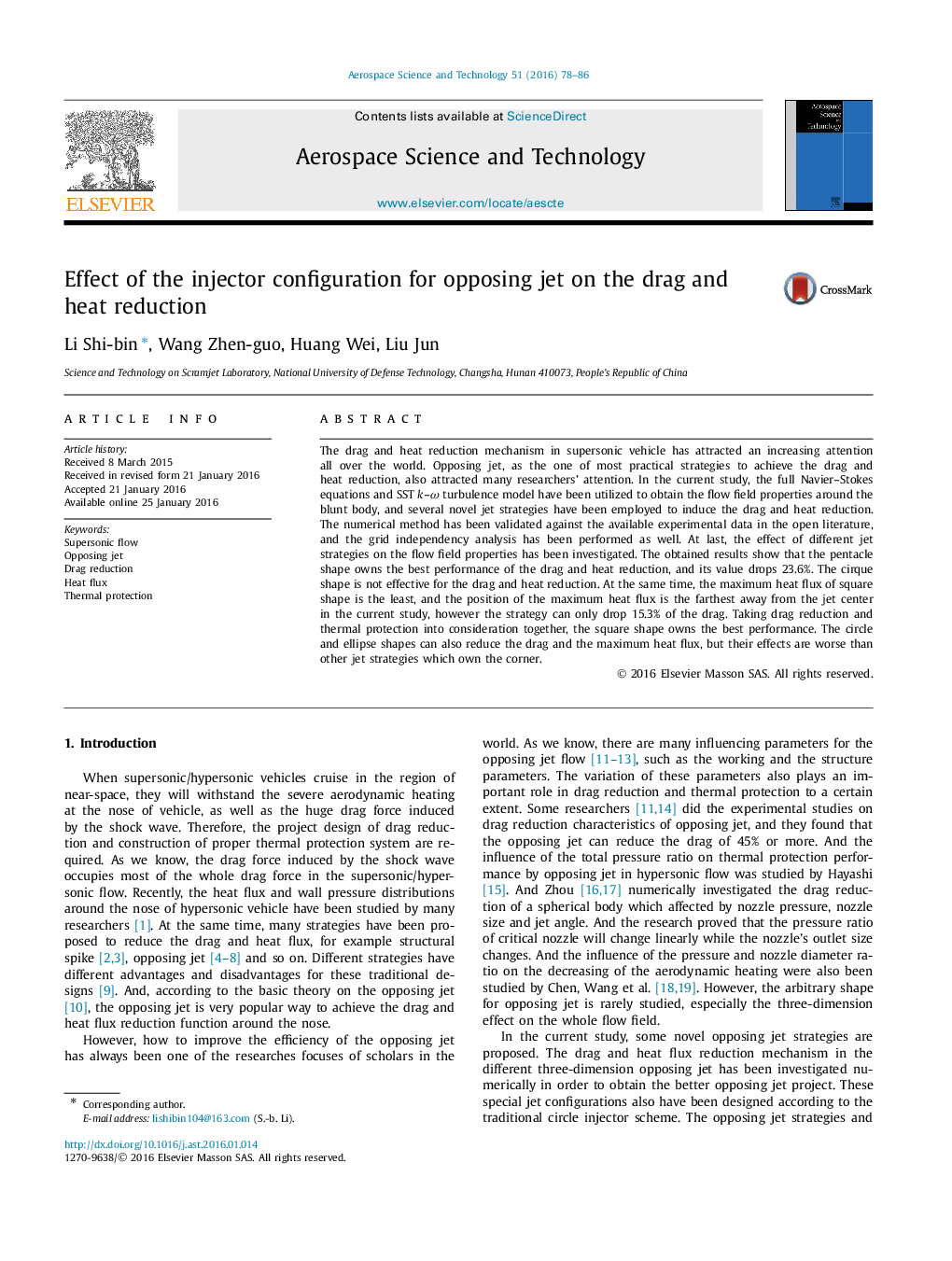| Article ID | Journal | Published Year | Pages | File Type |
|---|---|---|---|---|
| 1717648 | Aerospace Science and Technology | 2016 | 9 Pages |
The drag and heat reduction mechanism in supersonic vehicle has attracted an increasing attention all over the world. Opposing jet, as the one of most practical strategies to achieve the drag and heat reduction, also attracted many researchers' attention. In the current study, the full Navier–Stokes equations and SST k–ωk–ω turbulence model have been utilized to obtain the flow field properties around the blunt body, and several novel jet strategies have been employed to induce the drag and heat reduction. The numerical method has been validated against the available experimental data in the open literature, and the grid independency analysis has been performed as well. At last, the effect of different jet strategies on the flow field properties has been investigated. The obtained results show that the pentacle shape owns the best performance of the drag and heat reduction, and its value drops 23.6%. The cirque shape is not effective for the drag and heat reduction. At the same time, the maximum heat flux of square shape is the least, and the position of the maximum heat flux is the farthest away from the jet center in the current study, however the strategy can only drop 15.3% of the drag. Taking drag reduction and thermal protection into consideration together, the square shape owns the best performance. The circle and ellipse shapes can also reduce the drag and the maximum heat flux, but their effects are worse than other jet strategies which own the corner.
